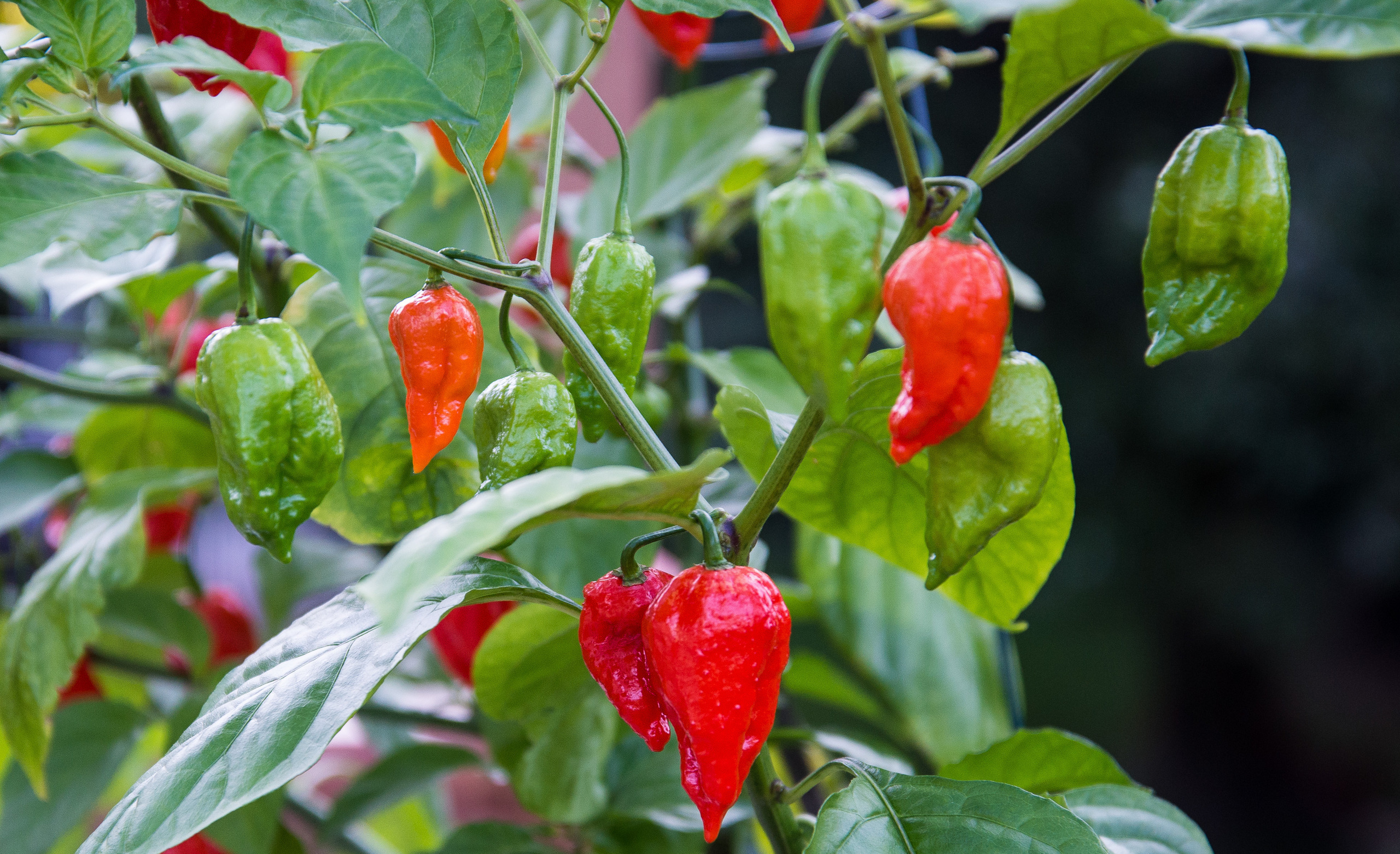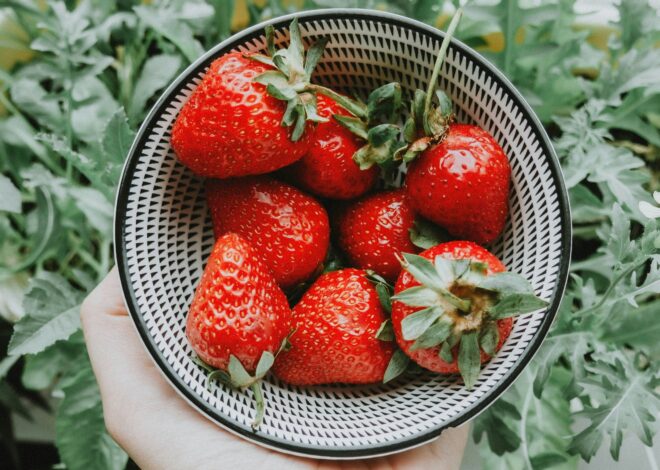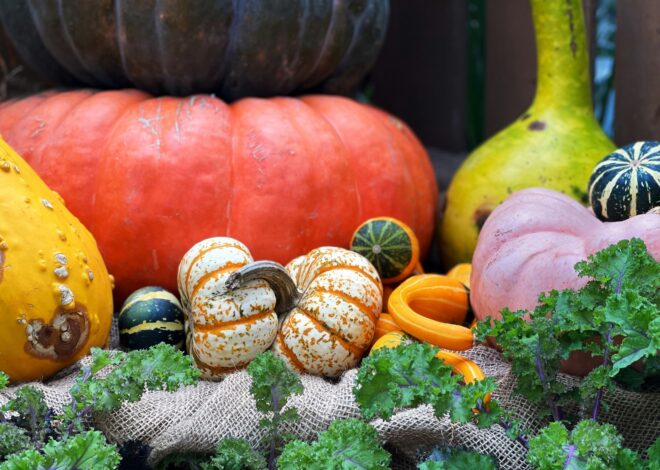
How To Grow Ghost Pepper Plants
Welcome to our guide on how to grow Ghost pepper plants. Ghost pepper plants, known for their fiery heat and unique flavor, have become a favorite among spice enthusiasts and gardeners alike. If you’ve ever craved that intense kick in your dishes or wanted to impress friends with homegrown hot peppers, you’re in the right place.
These vibrant plants not only add color to your garden but also offer an exciting challenge for seasoned gardeners and beginners alike. Growing ghost peppers requires some specific knowledge and care, but the reward is worth every effort. Imagine harvesting those bright red pods straight from your backyard!
Let’s dive into the world of ghost pepper cultivation so you can start growing these scorching beauties like a pro.
Benefits of Growing Ghost Peppers
Growing ghost peppers offers a thrilling experience for gardening enthusiasts. These fiery fruits pack an incredible heat that can elevate any dish, making them popular in culinary applications. Besides their flavor, ghost peppers are rich in vitamins A and C.
They contribute to boosting your immune system and improving overall health. Incorporating these spicy gems into your diet could also aid digestion. Another perk is the potential for profit. Ghost peppers command higher prices in markets due to their unique taste and intensity.
If you sell them or create homemade sauces, you might turn a hobby into extra income. Furthermore, cultivating ghost pepper plants adds visual appeal to your garden. Their vibrant colors range from green to bright red as they ripen, offering stunning contrasts among other plants.
Growing these peppers allows you to connect with fellow spice lovers. Sharing tips and recipes creates a community of passionate gardeners eager to share their experiences.
The Best Time to Plant Ghost Peppers
Timing is crucial when it comes to planting ghost peppers. These fiery plants thrive in warm conditions, so it’s best to wait until the last frost has passed. Typically, you should aim for late spring or early summer. Soil temperatures should ideally be around 70°F (21°C) or higher.
This warmth encourages germination and promotes healthy growth. If you’re starting from seeds indoors, sow them about eight to ten weeks before the expected outdoor planting date. Keep a watchful eye on your local weather forecasts; unexpected cold snaps can hinder your progress.
Once you transplant seedlings outdoors, ensure nighttime temperatures consistently stay above 55°F (13°C). This will create an ideal environment for your ghost pepper plants to flourish and produce those infamous pods that pack a punch.
Choosing the Right Location for Your Plants
Selecting the perfect location for your ghost pepper plants is crucial. These fiery beauties thrive in warm conditions and need plenty of sunlight, so aim for a spot that gets at least six to eight hours of direct sun each day.
Consider the climate as well. Ghost peppers love heat but can struggle if temperatures dip too low. A south-facing wall or garden bed can offer some extra warmth. Good air circulation is also important. Avoid crowded areas where moisture might linger, leading to potential disease risks.
Instead, opt for an open space where breezes flow freely around your plants. Think about accessibility. You’ll want to easily reach your ghost peppers for watering and harvesting when the time comes. Choose a place that invites you back regularly; tending to these plants should be enjoyable!
Choosing the Right Seeds
When it comes to choosing the right seeds for your ghost pepper plants, quality is key. Look for reputable suppliers who specialize in hot peppers. This ensures you get authentic ghost pepper seeds. Consider opting for heirloom varieties if you want a taste of tradition.
Heirlooms often have superior flavor and can be more resilient than hybrids. Always check the seed packet for germination rates and planting instructions. High germination rates mean better chances of successful growth. If you’re feeling adventurous, explore different strains of ghost peppers like the Chocolate Bhutlah or Carolina Reaper.
Each variety brings unique heat levels and flavors to your garden. Don’t forget about local climate conditions when selecting seeds. Certain strains may perform better in specific environments, affecting their overall yield and health as they grow.
Preparing the Soil for Planting
Preparing the soil is a critical step in successfully growing ghost pepper plants. Start by selecting nutrient-rich, well-draining soil. Ghost peppers thrive in loamy or sandy soils with good aeration. Begin by testing your soil pH. Ideally, it should be between 6.0 and 7.0 for optimal growth.
If necessary, add lime to raise the pH or sulfur to lower it. Next, incorporate organic matter like compost or aged manure into the soil. This enhances fertility and promotes beneficial microbial activity. Break up any compacted areas to encourage root development.
Raking the surface will also remove debris that could harbor pests. Consider adding slow-release fertilizers containing potassium and phosphorus before planting your seeds or seedlings. These nutrients are essential for strong plant growth and fruit production throughout the season.
Planting Your Ghost Pepper Seeds
Timing is key when planting your ghost pepper seeds. Start indoors about 8 to 10 weeks before the last frost date in your area. This gives them a head start in a warmer environment. Use seed trays or small pots filled with a well-draining seed-starting mix. Plant the seeds about one-quarter inch deep, covering them lightly with soil.
Water gently but thoroughly after planting. Keep the soil moist but not soggy; too much water can lead to rot. Place your trays in a warm spot—ideally between 75°F and 85°F. Consider using a heat mat to maintain consistent warmth, which promotes germination.
Once seedlings appear, provide ample light through grow lights or by placing them near sunny windows. Thin out weaker seedlings as they grow, allowing only the strongest ones to thrive for later transplanting outdoors.
Caring for Your Ghost Pepper Plants
Caring for your ghost pepper plants is essential to ensure a bountiful harvest. These fiery beauties thrive in warm conditions, so keep them in a sunny spot with at least six hours of sunlight daily. Watering is crucial but tricky. Allow the soil to dry out slightly between waterings.
Too much moisture can lead to root rot, which you definitely want to avoid. Fertilization plays a key role too. Use a balanced fertilizer every few weeks during the growing season. This boosts plant health and encourages robust fruit production. Watch for pests like aphids or spider mites.
Regularly inspect your plants and act promptly if you notice any unwelcome guests. Pruning helps maintain air circulation and promotes better growth. Remove dead leaves or stems as needed, allowing your ghost peppers room to flourish without overcrowding. Keep an eye on their progress; these little details make all the difference!
Harvesting and Using Ghost Peppers
Harvesting ghost peppers requires a keen eye. These fiery fruits typically ripen about 90-120 days after planting. Look for vibrant colors, usually bright red or orange, indicating they are ready to pick. Use gloves when handling these peppers; their heat can linger on your skin and cause irritation.
Gently twist the pepper from the stem to avoid damaging the plant. Once harvested, ghost peppers offer endless culinary possibilities. They can be dried and crushed into powder for seasoning or used fresh in salsas and sauces. Just remember: a little goes a long way!
If you’re adventurous, try infusing oils or vinegar with ghost pepper for an added kick in your dishes. Always start with small amounts when cooking to gauge heat levels—these tiny peppers pack a serious punch!
Common Mistakes to Avoid When Growing Ghost Peppers
One common mistake is planting ghost peppers too early. These plants thrive in warm conditions, and frost can ruin your efforts. Wait until the danger of frost has passed. Overwatering can also be detrimental. Ghost pepper plants prefer well-drained soil.
Too much moisture leads to root rot, so stick to a consistent watering schedule without drowning them. Neglecting to provide adequate support may result in damaged stems as the fruit grows heavier. Consider using stakes or cages for stability. Failing to monitor for pests like aphids is another pitfall.
Regularly check your plants and act promptly if you spot unwelcome guests. Many growers underestimate the importance of proper fertilization. Use a balanced fertilizer but avoid over-fertilizing, which can lead to lush foliage at the expense of fruit production. With attention and care, you’ll keep these pitfalls at bay while nurturing robust ghost pepper plants.
Troubleshooting: Dealing with Pests and Diseases
Pests and diseases can be a nightmare for ghost pepper growers. It’s vital to stay vigilant from the moment you plant your seeds. Common pests include aphids, spider mites, and whiteflies. Regularly inspect your plants for any signs of infestation. A strong blast of water can dislodge many pests without harming the plant.
Fungal issues like powdery mildew often arise in humid conditions. Ensuring good air circulation around your plants helps prevent this problem. If you do spot mildew, applying a mixture of baking soda and water can work wonders. For bacterial infections, keep tools sanitized and avoid wetting leaves when watering.
Crop rotation is another preventive measure that helps maintain soil health. Natural predators are also beneficial; ladybugs love munching on aphids! Embrace organic solutions whenever possible to protect both your peppers and the environment.
Conclusion: Growing Ghost Peppers
Growing ghost pepper plants can be an exciting and rewarding endeavor for any gardening enthusiast or spice lover. With the right knowledge and care, you can cultivate these fiery peppers in your own backyard.
The key to success lies in understanding their unique needs, from selecting quality seeds to ensuring proper soil preparation. Taking the time to choose a sunny spot will provide the warmth these plants crave. Regular watering, pest management, and attentive care will lead to a bountiful harvest.
Ghost peppers are not just visually stunning; they pack an intense heat that adds flavor to many dishes. Whether you’re looking to spice up your meals or create homemade sauces, knowing how to grow ghost pepper plants allows you access to this culinary treasure.
So dig deep into your passion for gardening and take on the challenge of growing ghost peppers. The journey is as thrilling as the taste of your homegrown hot peppers!



